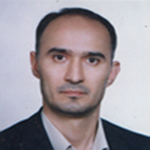Morphological and Molecular Identification of Fusarium spp. as Root Endophytes of Spontaneous Barley (Hordeum spontaneum) and Turnipweed (Rapistrum rugosum)
Endophytic microorganisms are present inside plant tissues without evident disease symptoms, but they have different interactions with their host. These microorganisms have revealed a great potential to be exploited as a biological control agent of troublesome weeds. Endophytic microorganisms in association with weed roots can act as a soil application herbicide through toxin secretion. These agents in most cases do not kill target weed but instead, have an ability to suppress them noticeably, so the crop can compete with companion weeds very successfully. Unfortunately, the endophytic microorganisms of weeds are less studied and such studies is very limited. So, this experiment was conducted to study root endophytic Fusarium species of Hordeum spontaneum and Rapistrum rugosum as serious weeds of winter cereals of our country. Fusarium species are one of the most important host-specific microorganisms in the biological control program of weeds.
The weeds planted in pots filled with the soil of wheat farms sampled from Alborz, Tehran, Khorasan shomali, Khuzestan, Fars, Qazvin, Kermanshah and Golestan provinces (Iran), under greenhouse condition. The plant harvested at 5–6 leaf stage, roots were cut from the crown and sliced into small pieces. Then the pieces of root were cultured on specific Fusarium medium, Penta chloro Nitro Benzene Peptone Agar (PPA). Fusarium spp. grown on the medium, sub-cultured onto the Water Agar (WA) medium. After 24-72 h hyphae tip of the isolates translocated onto the Potato Dextrose Agar (PDA) medium and let them to fully grow and pure isolates obtained. Some morphological details of the species e.g. chlamydospore formation and physical characteristics of it, color and diameter of the colony (after 72 h) were assessed according to their growth habit on PDA medium. Each species translocated onto Carnation Leaf Agar (CLA) and Synthetic Nutrient Poor Agar (SNA) mediums to evaluate other necessary morphological characteristics. Sporodochium formation and physical characteristics of macroconidia on CLA, and microconidia formation and physical characteristics of microconidia on SNA, also assessed. Isolates were identified based on molecular data that were generated for TEF 1-α gene, following PCR amplification as well. Pro Chromas (1.7.6 version) and Editseq (5.01 version) softwares were used to edit the sequences before further processing. Edited sequences were blasted in NCBI (http://www.ncbi.nlm.nih.gov/blast/) and compared to those sequences that already existed in the database to find similarities and molecularly identification of species. Selected sequences of the study and those isolates from the database were alignment using Clustal X (version 2.1) software and finally phylogenic tree was drawn using MEGA6 (molecular evolutionary genetics analysis). And appropriate outgroup was exploited to sequences analysis. Finally, maximum composite likelihood method was used to analyze and assessment of nucleotide sequence of gene regions of different isolates. With taking into account of all these information together, we were able to identify all isolated Fusarium species with confidence.
Fusarium equiseti was the dominant species recovered in several regions, while the other Fusarium species were site and species-specific. F. equiseti was recovered from the root of H. spontaneum and R. rugosum plants cultured in the soil of Fars and Golestan. This species also recovered from the root of H. spontaneum and R. rugosum cultured in the soil of Khouzestan and Qazvin provinces respectively. In addition, F. redolens and F. acutatum were recovered from H. spontaneum root cultured in the soil of Khorasan Shomali and Qazvin provinces respectively. On the other side, F. torulosum and F. oxysporum were recovered from R. rugosum root cultured in the soil of Kermanshah and Tehran respectively. Totally 10 isolates of five different species of Fusarium recovered from the root of H. spontaneum and R. rugosum. It shows probably a lot of Fusarium species (and maybe other microorganisms) are in contact with weeds root which can be utilized as their potential biological agent, but the potential is not studied to a great extent. There are many reports that show many species of Fusarium are exploited as biological agents of different weed species. This is because of the host specificity of the fungus Fusarium which turns it to a suitable and efficient agent in the biological control program of serious hard to chemical control weeds.
Many grass weeds are very hard to manage with conventional methods especially chemical means. We have to look for other alternative solutions to overcome them. Biological control of weeds is a promising approach to wisely control of weeds, especially those that are very resistance prone or hardly controlled with available herbicides. Exploiting this approach needs proper and diverse control means. Microorganisms are a rich source of biological agents of weeds that less attention has been paid to them. Endophytic microorganisms of weeds are a new generation of biological agents that studies have been focused on them recently. The first step to choose an efficient agent is having a deep knowledge about what kind of species are living with them. In fact, detailed knowledge about endophytic microorganism of weeds can aid in better understanding of the nature of interactions between weed-microbe and how to exploit these as agents in weed biological control programs.
Fusarium equiseti , fungus , TEF , Weed , wheat
- حق عضویت دریافتی صرف حمایت از نشریات عضو و نگهداری، تکمیل و توسعه مگیران میشود.
- پرداخت حق اشتراک و دانلود مقالات اجازه بازنشر آن در سایر رسانههای چاپی و دیجیتال را به کاربر نمیدهد.



